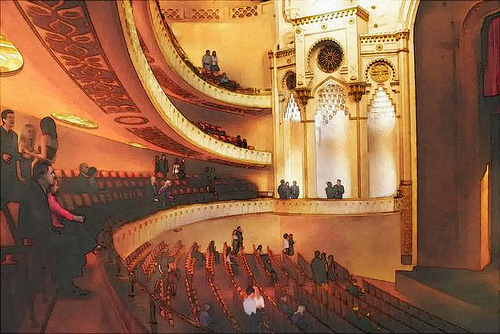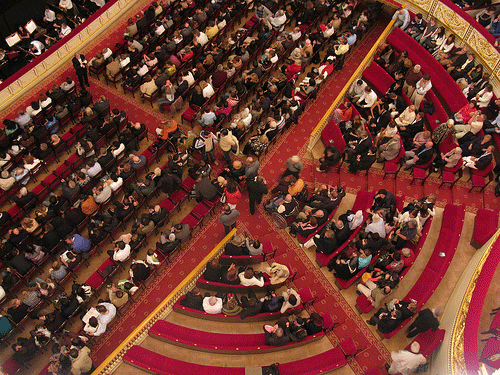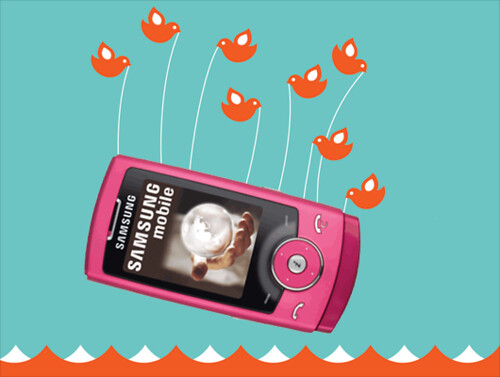
- Watercolor style theater renovation by Gordon Tarpley (from flickr)
In part 2 of this 3-part entry, I interviewed social media managers from different regions, artistic disciplines, and mission focuses about how diversity drives their social media strategy. I found that, for most, online community-building came first and diversity factored in minimally, except in terms of age.
When I first came up with the idea for this blog series, my first instinct was to do a quick search of the niche social networking site BlackPlanet.com. It showed groups for black actors, a very large poet group, a few artist groups, etc. Lots of jazz fans. Lots of fans of activities that researchers are constantly associating with arts attendance. But not one LORT theatre is on the site. Not many theatres period, except the stray comedy club.
In analyzing the responses of the social media managers and the notable absence of non-profit arts organizations on these niche social networks, I was puzzled. Then I thought, “Am I asking the wrong question here?”
Would most American theatres (most of which produce, on average, about one play by a black playwright a year) have a place on these networks that exist to connect black people to one another and to black culture? Maintaining a profile on one of these sites while you’re promoting Noël Coward’s Blithe Spirit could be a bit of a stretch.
But even maintaining a tenuous connection to this community, such as an ad, could get a whole new community of people looking at your org, right? I decided to talk to an expert. Gerry Eadens is a media buyer who has worked in advertising for nearly 20 years and now works at Kansas City Repertory Theatre. She specializes in Search Engine Marketing (SEM) and other online media. She did a cursory search and found at least 100 sites through the Google ad network that are meant to serve a specific cultural or ethnic group.
Research shows, however, that advertising is not a replacement for a social networking presence and vice-versa. Eadens cautioned me, “Typical display ads are not recommended for the best response from social network users since they are often ignored. Research has shown that advertisers garner greater results from more engaging activity with their audience such as posts that appear within news feeds.” Add to that the difficulties that online marketers often have in knowing how to focus an ad toward their intended audience. There’s no ethnicity category on the Facebook ad set-up interface, and I’m guessing that the company probably won’t add one in the near future.
So what can we do and more importantly, what’s worth our time to do?
At long last, the diversity question has come around to the classic “old vs. new” debate: When faced with declining arts attendance, is it better to “pick the low-hanging fruit” and focus on maintaining and growing our existing audience demographics ("the more return on investment for less energy" approach) or make a long-term investment in trying to attract new groups of people to our performances?
In a recent cultural policy article I read, I came across the question, “In our art, we place great value on experimentation and innovation—why not in our management practices?” I thought this was a great question, and I also bought into it, at first. Innovation seems to be the hot buzzword these days, and I think that generally, it’s a great value to have. However, from listening to the reasoning of the social media managers in the previous entry, I would argue it may not always be the most important one, especially from a user’s perspective (as opposed to a developer’s). They have tailored their social media presence to be purpose driven, tailored to their mission statement and aimed toward staying connected with their current audience while gaining new audiences, although not specifically diverse ones. Timothy Platt of the Leukemia and Lymphoma Society writes about purpose-driven marketing on his blog Platt Perspective:
Good online social networking means sharing value and even paying it forward and taking the initiative in starting that process. But true online communities always carry this greater, synergistic value and are bound together by the cohesion and momentum that it brings. It is in the communities of members and supporters that good nonprofits gain their strength…
When I interviewed Thomas Cott of Alvin Ailey American Dance Theatre, he spoke about his org’s purpose-driven strategy. “Since social media works best when you don’t try and push sales too directly, we’ve been using Facebook as an outlet to expand our ‘brand awareness’ and we’ve succeeded in attracting fans from many countries.” For an organization with an international presence, the brand awareness angle is especially valuable.
More local or regional orgs, on the other hand, value building community locally. Brian Hinrichs of Madison Opera commented, “Our Facebook page very much feels like a community–fans comment and interact, they want more blog posts and photos, etc. Twitter doesn’t yet feel so cohesive: I’m interacting mostly with local media and other opera companies and nurturing those relationships. If our local paper re-tweets a ticket link or production photos, that is extremely valuable, but this is not where most of our fans are…yet.”
No matter your geographic focus, social networks are fundamentally about forming a community and having conversations. Therefore, having a clear purpose in mind when you choose your networks is essential. We’ve all heard the adage “the medium is the message.” It means that the method by which your audience receives your message becomes an inextricable part of the message itself. The phrase was coined in the 1960’s before the advent of the social media frenzy. But think about what it says to us today. Your show is its logo. Your season is the email blast that announces it. Your theatre is your Facebook fan page. But there’s more to it than that. With social media, the audience becomes both medium and message. Your audience is your identity. Who your fans are says something about who your organization is. If someone chooses to invest themselves in your product or purpose by becoming a fan or making a comment, then they become part of your organization in a way that’s visible. They become a message that your organization is worth following.
Think about the last think you received a postcard from an arts org. Chances are, they wanted a private, one-way, and perhaps institutionalized response from you (like buying a ticket, perhaps?). Outside of social media your level of engagement with the organization is determined by those ticket purchases and other statistics available exclusively to the organization. Not so in the world of social media. Think about how different the message is between a postcard (Buy a ticket!) and a Facebook page (Interact with us!). There are many ways to interact, and many messages a fan can send you. By creating a presence on a specific social networking site, you are signaling that you are open to communication with the people on that network. So what does it say if your organization is not present?









